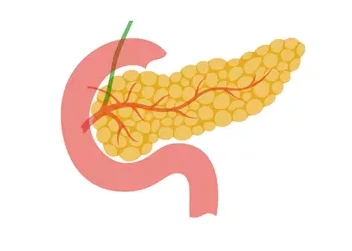
Pancreatic Surgery
- Pancreatic Surgery
- Pancreas and Pancreatic Surgery
- What Conditions Is Pancreatic Surgery Done For?
- What Are the Types of Pancreatic Surgery?
Pancreas and Pancreatic Surgery
The pancreas is an important organ located behind the stomach that plays crucial roles in digestion and regulating blood sugar levels. Pancreatic surgery is a complex and challenging surgical procedure that involves partial or complete removal of the pancreas, which is essential for digestion and blood sugar regulation.
Pancreatic surgery is a complex and challenging surgical field that requires specialized training and experience. It is associated with a high risk of complications, and experience plays a crucial role in managing these complications. The equipment and facilities available at the hospital where pancreatic surgery is performed are also important in the management of complications.
What Conditions Is Pancreatic Surgery Done For?
Pancreatic surgery is a surgical procedure used to treat various diseases of the pancreas. Pancreatic surgery can be used in the treatment of the following conditions:
- Pancreatic Cancer: Pancreatic cancer is a type of cancer that originates in the cells of the pancreas and spreads rapidly. Pancreatic surgery can be used to remove the tumor in the early stages of cancer.
- Pancreatitis: Pancreatitis is inflammation of the pancreas. Surgical treatment may be considered in cases of chronic pancreatitis or severe acute pancreatitis attacks. Pancreatic surgery can be performed to address problems such as gallstones, tumors, or narrowed pancreatic ducts that cause pancreatitis.
- Pancreatic Cysts: Pancreatic cysts are fluid-filled sacs within the pancreas. These cysts can sometimes be cancerous or have the potential to become cancerous. Large or suspicious pancreatic cysts can be surgically removed.
- Pancreatic Neuroendocrine Tumors: Pancreatic neuroendocrine tumors are tumors that originate from the endocrine cells of the pancreas. These tumors are usually slow-growing and sometimes secrete hormones. Surgery can be used to remove the tumor or control symptoms.
- Pancreatic Pseudocysts: Pancreatic pseudocysts are fluid-filled cavities that form as a result of pancreatitis or injury to the pancreas. Surgical treatment may be required for large or symptomatic pseudocysts.

What Are the Types of Pancreatic Surgery?
Pancreatic surgery requires specialized training and experience. Pancreatic surgery can be performed using open or laparoscopic techniques. In open surgery, a large incision is made in the abdomen to access the pancreas and perform the necessary surgical procedures. In laparoscopic surgery, the surgeon makes several small incisions and uses a special camera and surgical instruments to perform the procedure.
The most common type of pancreatic surgery is the Whipple procedure, also known as pancreaticoduodenectomy. This procedure involves the removal of the head of the pancreas, the first part of the small intestine (duodenum), the gallbladder, and a portion of the stomach. The remaining pancreas is connected to the small intestine and stomach. The Whipple procedure is typically used for the surgical treatment of pancreatic cancer located in the head of the pancreas and has not spread beyond the pancreas.
Distal pancreatectomy involves the removal of the tail and body of the pancreas. This procedure is performed to treat cancers located in the body or tail of the pancreas. The spleen is often removed during this procedure if it is located in the tail of the pancreas.
Total pancreatectomy involves the complete removal of the entire pancreas. This procedure is performed in cases of advanced pancreatic cancer or when pancreatitis is unresponsive to medical treatment. After a total pancreatectomy, patients require lifelong insulin therapy to regulate blood sugar levels.
Pancreatic surgery is associated with a high risk of complications, including bleeding, infection, and damage to surrounding organs. The risk of complications is higher in patients with other medical conditions such as diabetes, heart disease, or lung disease. Patients who undergo pancreatic surgery may also experience digestive problems such as diarrhea, bloating, and weight loss, and they may require lifelong insulin therapy. Recovery from pancreatic surgery can take several weeks or even months, and patients need to follow a special diet and take medication to manage their symptoms.
In conclusion, pancreatic surgery performed by surgeons trained in this field has a higher success rate. If the surgery is performed for pancreatic cancer, this success rate translates into the patient living cancer-free for a longer period of time.





